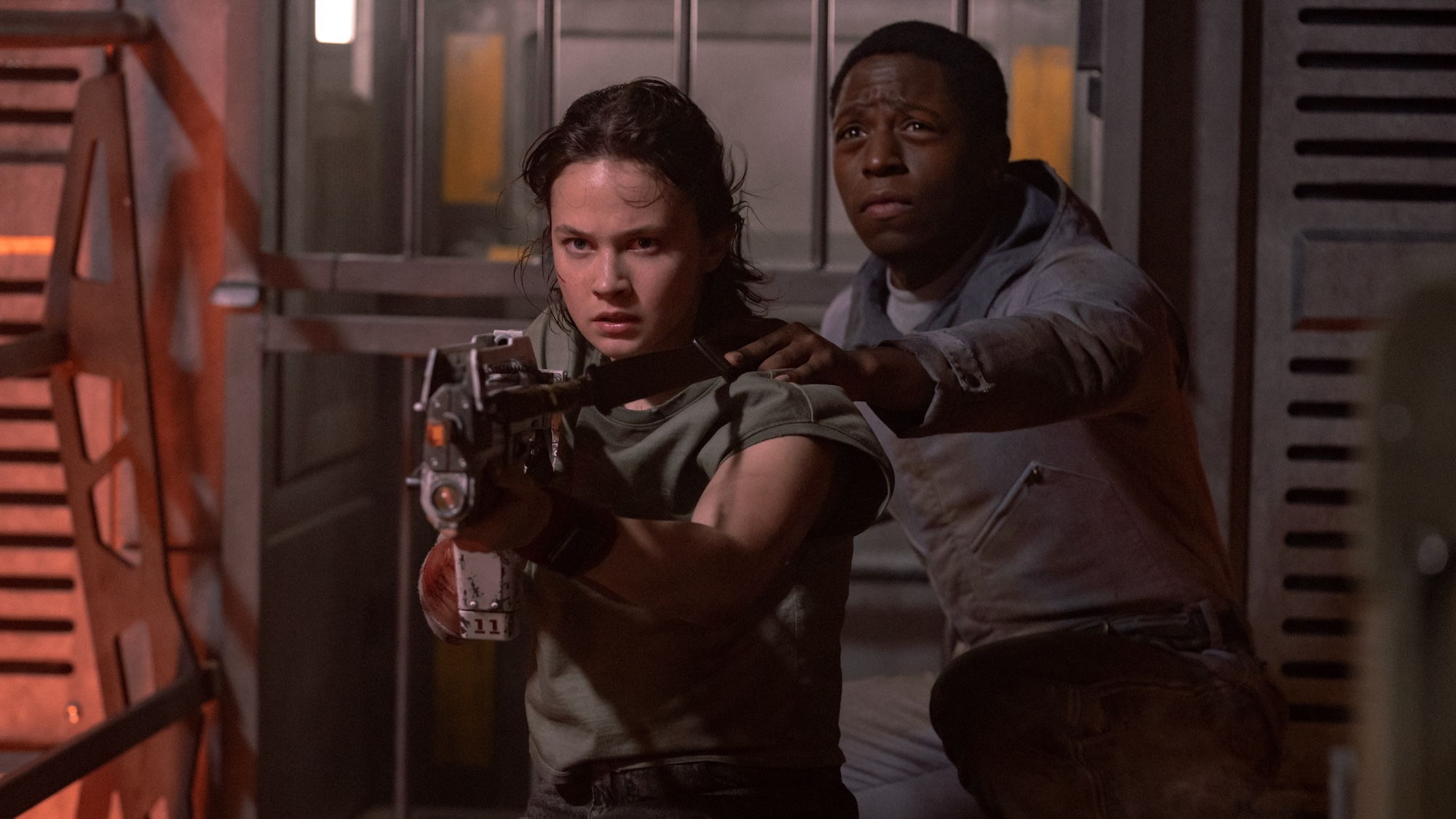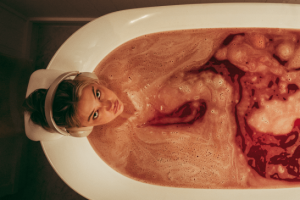
Since the beginning, every sequel and prequel in the now seven-film Alien franchise—yes, there are only seven movies, those other two monster mashes never happened!—has been at war with itself. And the battle has remained the same: How much do we evolve the sci-fi concepts suggested by the monster versus serving up what worked before?
Over the past 45 years, the series has flirted with intriguing ideas, such as when Renny Harlin (who quit) and then Jean-Pierre Jeunet proposed respective Alien 3 and 4s that ended up on Earth. There was also the original intentions of Vincent Ward (who quit) to set Alien 3 on a floating wooden space monastery straight out of A Canticle for Leibowitz. Ultimately the powers that be decided in entry after entry that fans need the penis-headed H.R. Giger alien just how they remember it; a resourceful final girl being chased through corridors lined with bulkheads; and a duplicitous android who may or may not be on the hero’s side.
Realizing that, we can report the latest entry Alien: Romulus exists in a magical world where it brings fascinating new ideas to the table while also somehow containing wall-to-wall member berries. There’s even one of those drinking bird toys from the original movie! Taking place between the time of the first two fondly remembered films (Ridley Scott’s Alien and James Cameron’s Aliens), Romulus gives filmmaker Fede Alvarez the chance to make something that feels painstakingly reverent while also thoroughly modern. The director of the Evil Dead remake and Don’t Breathe also gets to indulge his penchant for luxuriating over the graphic mutilation of human bodies, often just under or over one side of revolting, depending on your disposition to such things.
The first big innovation this time around is focusing on a group of cool teens as opposed to the world-weary adults who have populated the previous films, Newt notwithstanding. It starts on a “shake-and-bake” colony on a terraformed planet meant to evoke Hadley’s Hope from Aliens with its atmospheric processors, bars, stumpy looking vehicles, and population of downtrodden workers. The hopeful young colonist Rain Carradine (Cailee Spaeny) is trying to get off the blue-collar mining planet after the death of her parents, but is being held back by the oppressive policies of the saga’s ubiquitous evil Weyland-Yutani Corporation.
The only remaining link to her family is a robot named Andy (he prefers the term “artificial person,” wink), who has been programmed by Rain’s father to protect her and tell bad dad jokes. When the two of them decide to join up with four other youths hatching an escape plan on a small cargo ship, they get way more than they bargained for.
These scalawags decide to take their ship to an abandoned science vessel that has floated into their ringed planet’s orbit and strip it of cryopods so they can sleep away the nine-year journey to an ideal haven. Of course these punks realize very quickly that the massive floating space station—split into two sections named Romulus and Remus—is not as derelict as one would hope. It contains a multitude of the nasties we have come to expect like a lukewarm Big Mac and Fries. Anyone familiar with this franchise knows it is not a spoiler to tell you that there are less hot young characters alive at the end of this film than there were at the beginning.
Around 2015, filmmaker Neill Blomkamp announced that he was working on a new Alien movie that would bring back Sigourney Weaver as Ripley, Michael Biehn as Hicks, and an aged-up Newt. How could he do this, considering all three of those characters died in Alien 3? By using a plot device that posited that the events of Alien 3 and Alien: Resurrection (in which Ripley is cloned) were merely dreams/hallucinations experienced by the survivors of Aliens, therefore allowing those two more divisive films to be effectively swept under the rug for the sake of whiney fans. This was, of course, a silly (and ultimately scrapped) idea borne out of the generalized fear that permeates the minds of modern franchise filmmakers who are terrified of fans who want their favorite characters reset to status quo at every outing rather than aging, growing, or evolving the way actual human beings do.
Luckily both Alvarez and his longtime co-screenwriter Rodo Sayagues realize how dumb it is to haphazardly toss lore that has been carefully cultivated with each entry in a series. Thus one of the true joys of Alien: Romulus is the way it integrates elements from all six previous movies, including the two prequels devised by executive producer/OG director, Ridley Scott.
It’s a franchise-binding movie. We won’t reveal how the filmmakers do this, but it is heartening to see these callbacks/expansions of previous ideas, because it feels like payoff in a series where each successive film has often felt like either a reaction, course correction, or even middle finger to the previous entry. Scott himself seemed to abandon the sense of awe and meditations on mortality of Prometheus when he served up more conventional xenomorph action in the subsequent Alien: Covenant, which felt less like an artistic decision and more an obligatory one.
Romulus gives us some inventive new gadgets, set pieces, and lore, even adding a cool never-revealed step in the title creature’s well-worn life cycle of facehugger, chestburster, and grown-ass alien. One sequence involving an elevator shaft is a real banger. Still, it’s hard to ignore all the “homages” to previous movies, and if you’ve been waiting for an entry that feels radically fresh you best keep waiting. Re-dressing old formulas The Force Awakens-style is certainly the primary mode this film operates on, but a big IP sci-fi horror flick that’s 60 percent old and busted and 40 percent new hotness is about as good a ratio as we can hope for these days.
While it would have been cool to see Giger’s iconic baddies on earth or in a creepy gothic planetoid, there are ideas planted in previous existing Alien films which have still never been mined… presumably because they would stray too far from expectations. For example, 1986’s Aliens suggested there are many other alien species throughout the universe, including the hermaphroditic Arcturians, but we’ve hardly seen any in successive pictures except for Scott’s creepy albino “Engineers,” which were hinted at in Alien. Even the term “xenomorph” was not meant to be the proper name of the Giger creatures, just a generalized term for unknown alien species.
Another untapped idea is that the creatures can take on the form of whatever host the facehugger implants, as when an alien is born of a dog instead of a person in Alien 3, and thereby has more dog-like characteristics. Who wouldn’t want to see an elephant version of the alien or a fish version? These are places the Alien movies stubbornly refuse to venture into (no, we’ve never heard of Alien vs. Predator), but perhaps if Romulus finds success it can galvanize the next cinematic visionary who climbs aboard this bucking mechanical bull of a saga.
On the technical side of things, Alien: Romulus is aces. Cinematographer Galo Olivares (Gretel & Hansel) veers toward dark and claustrophobic but knows when to open or brighten things up. Production designer Naaman Marshall (Underwater) effectively captures the chunky iconography of late concept designer Ron Cobb’s sketches for both Alien and Aliens while also pulling from elements like the 2014 video game, Alien: Isolation. The omnipresent Weyland-Yutani corporate logo and grimy equipment constantly drive home how little this company cares for the people they hire to “Building Better Worlds.”
Composer Benjamin Wallfisch (Blade Runner 2049) also expands on Jerry Goldsmith’s original score, even incorporating notes of “You Are My Lucky Star” into the mix.
The relatively small cast of twentysomethings are all capable ciphers, which is not an insult considering most of the characters in the Alien movies are pretty thin/utilitarian, even Ripley… we challenge you to name a characteristic of Ripley besides some variation of “smart/capable/brave.” You have tough pilot lady (Aileen Wu), sympathetic pregnant girl (Isabela Merced), pot smoking douche (Spike Fearn), and stand-up dude (Archie Renaux).
Spaeny’s Rain is a formidable, vulnerable badass in a series chock full of them, although no one has topped Sigourney Weaver yet. The easy standout is David Jonsson’s android, who deliciously gets to play both sides of the coin and might be the most nuanced of any of the movies’ mechanical men and women.
Considering director Alvarez kicked off his career with a 2009 viral sci-fi short called “Panic Attack,” it is wonderful to finally see him return to those roots and deliver one of the most assured entries in the storied Alien series. Despite all the callbacks, this film will also likely serve as an accessible gateway drug to newcomers as well. Now that the fan service has been properly served, let’s hope the inevitable next outing can fly us into truly uncharted territory.
The post Alien: Romulus Review – Brings the Whole Franchise Together with Love and Acid appeared first on Den of Geek.










